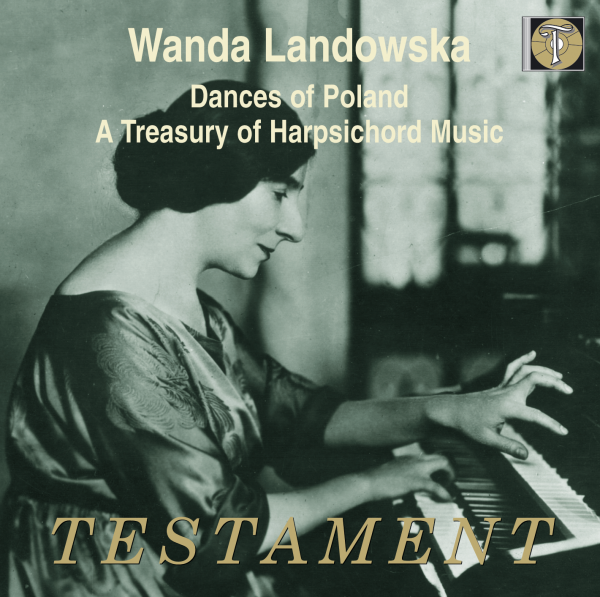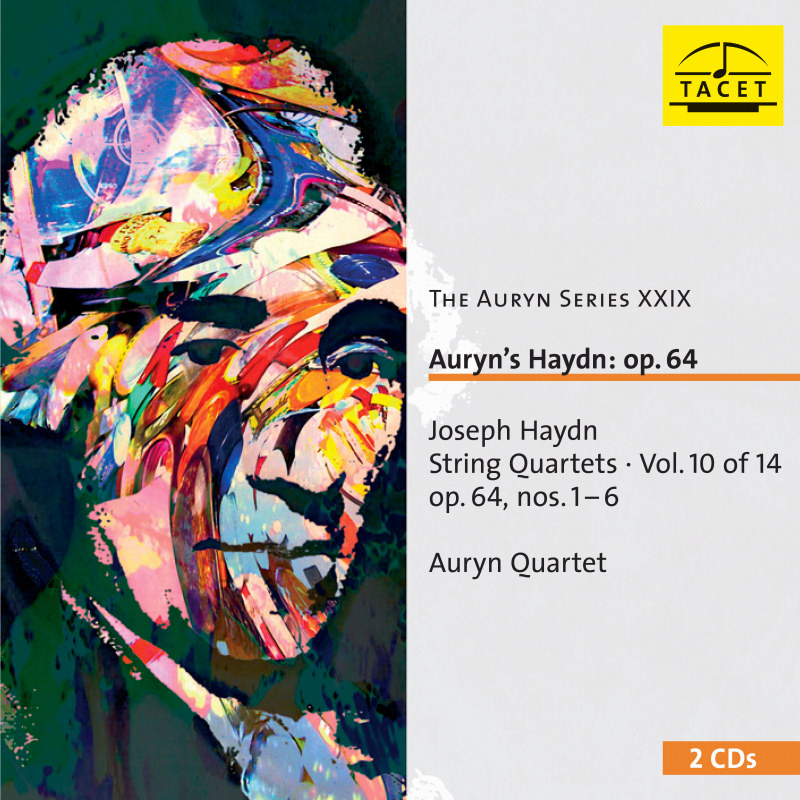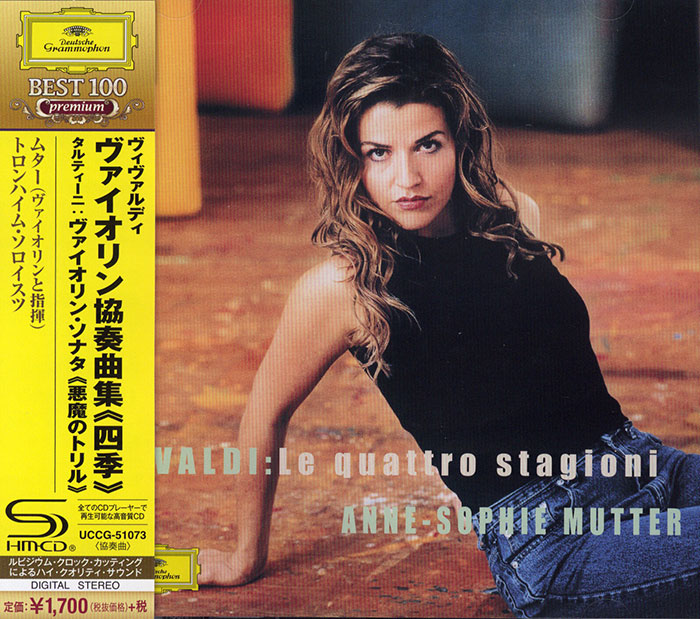Logowanie
KOLEKCJE!
BACH, CHOPIN, LISZT, MOZART, GRIEG, Dinu Lipatti, Otto Ackermann, Ernest Ansermet
The Master Pianist
PROKOFIEV, CHOPIN, TCHAIKOVSKY, SCHUMANN, BEETHOVEN, Martha Argerich, Claudio Abbado, Giuseppe Sinopoli
The Concerto Recordings
The Collection 2
Jakość LABORATORYJNA!
ORFF, Gundula Janowitz, Gerhard Stolze, Dietrich-Fischer Dieskau, Deutsche Oper Berlin, Eugen Jochum
Carmina Burana
ESOTERIC - NUMER JEDEN W ŚWIECIE AUDIOFILII I MELOMANÓW - SACD HYBR
Winylowy niezbędnik
ClearAudio
Essence MC
kumulacja zoptymalizowana: najlepsze z najważniejszych i najważniejsze z najlepszych cech przetworników Clearaudio
Direct-To-Disc
PIAZZOLLA, ChamberJam Europe
Tangos del Ángel y del Diablo
Direct-to-Disc ( D2D ) - Numbered Limited Edition
BACH, HANDEL, CHOPIN, MOZART, Wanda Landowska
Dances of Poland: Treasury of Harpsichord Music
- 1. Polonaise for piano in A minor "Farewell to the Fatherland" (5:23)
- 3. Bourrée d'Auvergne No. 2, for keyboard (2:57)
- 4. Chorea polonica, for keyboard (2:17)
- 5. Polonaise for piano in G major (2:25)
- 6. Les Indes galantes, opéra-ballet : Air grave pour les deux Polonois (3:07)
- 7. La Princesse Marie, Air dans le go?t Polonois, for harpsichord (Pi?ces de clavecin, Book IV, 20e ordre) (1:53)
- 8. Work(s) : Three Polish Dances (17th Century) (4:15)
- 9. Work(s) : The Hop (Wedding Folk Song) (3:47)
- 10. Mazurka for piano No. 34 in C major, Op. 56/2, CT. 84 (2:10)
- 11. La Dauphine, for harpsichord in G minor (3:23)
- 12. Sonata for keyboard in D major, K. 443 (L. 418) (5:34)
- 13. Sonata for keyboard in D minor, K. 32 (L. 423) (2:12)
- 14. L'Arlequine, for harpsichord (Pi?ces de clavecin, IV, 23e ordre) (4:08)
- 15. Ground for harpsichord in C minor (from "Ye tuneful muses" Z344/11), ZT 681 (2:41)
- 16. The Nightingale (2:04)
- 17. Suite for keyboard (Suite de piece), Vol.1, No.5 in E major ("The Harmonious Blacksmith"), HWV 430 (4:26)
- 18. Piano Sonata No. 11 in A major ("Alla Turca") K. 331 (K. 300i) : Turkish March (2:17)
- 19. Minuet for piano in D major, K. 355 (K. 576b) (2:10)
- 20. Rondo for piano No. 1 in D major, K. 485 (6:07)
- 21. Concerto for solo keyboard No. 1 in D major (after Vivaldi Op. 3/9), BWV 972 (BC L189) (8:45)
- Wanda Landowska - piano
- BACH
- HANDEL
- CHOPIN
- MOZART
Polska pianistka, klawesynistka, kompozytorka oraz popularyzatorka muzyki renesansowej i barokowej. Ukończyła konserwatorium w Warszawie, studiowała w Berlinie m. in. u Henryka Urbana, który był również nauczycielem Ignacego Paderewskiego. Prowadziła poszukiwania dawnych instrumentów, zlecała budowanie klawesynów firmie Pleyel and Company. It's pretty startling to see Chopin's Mazurka in C major, Op. 56/2, in a list of harpsichord pieces, but what's even more startling is that in this context, it works on the harpsichord. This collectors' release combines two albums by Polish-born harpsichord pioneer Wanda Landowska. The first, Dances of Poland, was recorded in 1951 but not released until 1965, after Landowska's death. The second LP, A Treasury of Harpsichord Music, consists of recordings made in 1946, originally collected on LP in 1957; it includes what are now Baroque standards by Rameau, Handel, Domenico Scarlatti, François Couperin, and J.S. Bach (a keyboard arrangement of a Vivaldi concerto), along with a few Mozart movements. Of course, they weren't "standards" at the time; the world has Landowska to thank for the fact that this music is heard on the harpsichord at all -- she was ridiculed by one of her contemporaries, who asked why she wanted anything to do with such a "cage of flies." Landowska's custom made harpsichord was a giant beast, with a powerful, percussive sound and a variety of available registrations that she exploited to the maximum. She was trying to get the attention of people who had Rachmaninov in their ears, and today her playing would seem over the top if it weren't so intelligently put together. The Dances of Poland album is definitely an oddity, but the pulsing rhythmic power of Landowska's playing makes the music work surprisingly well. Hear the very first work on the album, Michal Kleofas Oginski's Polonaise No. 1 in A major, "Farewell to the Fatherland" -- a rousing work that sounds like a predecessor of Chopin's "Revolutionary" Etude. It by all rights ought to require a piano, but Landowska will have you tapping your foot to it. The Polish Renaissance dances Landowska includes are real rarities, as are the other folk-like pieces she includes -- one of them, an arrangement of a French bourrée from Auvergne, is credited to Landowska herself. Landowska argued that the harpsichord was suitable for reproducing folk music, which wouldn't have the crescendos and decrescendos available on modern instruments, and the Polish wedding dance called The Hop will convince you that she might have been onto something nobody has tried since. The album of Baroque harpsichord music is less surprising but has several very nice moments; sample Landowska's resonant treatment of Bach/Vivaldi's central Largo (track 22), where she makes her harpsichord sound like a whole string section. This release is a curiosity, perhaps, but it offers insight into the talents of a historical figure who increasingly seems well worth rediscovering. (James Manheim, allmusic.com) Testament restores two of Wanda Landowska's most treasurable and long-out-of-print albums. One is a 1951 collection of Polish dances, originally titled "Landowska plays for Paderewski" and repackaged in 1965 as "Dances of Ancient Poland". The second comprises 1946 recordings gathered on the 1957 release "A Treasury of Harpsichord Music". The latter's varying sound quality and occasional fade-ups on opening notes leads me to suspect that Testament's transfer stems from an LP production master tape rather than the original lacquer sources. The 1951 sessions were taped in Landowska's Lakeville, Connecticut home. Say what you will about the "inauthentic" registrations and huge sonorities of her custom-built Pleyel harpsichord: Landowska's powerful rhythmic swagger and soaring accentuation communicate heartfelt authenticity in every bar. The rumbling basses and hot-wired dotted rhythms of Oginski's A minor Polonaise, for example, are guaranteed to knock you out of your listening chair, and ditto for the earthy swing of Landowska's own Bourrée D'Auvergne No. 2 and her arrangement of the traditional wedding song "The Hop". Whether Chopin's C major Op. 56 No. 2 Mazurka should be played on a harpsichord or not doesn't matter, because Landowska's phrasing and instinctive inner rhythm surpass all piano performances I know of this composition. Her italicized 1946 remakes of Scarlatti's D major L. 418 and D minor L. 423 differ from her faster, more direct earlier HMV versions, yet her shifting registrations and subtle legato articulation cast a hypnotic spell in Couperin's Les Barricades Mistérieuses. What extraordinary finger definition and textural clarity she brings to Handel's Harmonious Blacksmith variations! What gorgeous, rippling sonorities she divines from the Bach-Vivaldi D major concerto's rolled chords in the slow movement! Purists may scoff at the octave transpositions and unconventional gearshifts Landowska employs in Mozart's Turkish March and D major Rondo K. 485, yet few have judged the D major Menuetto's dissonances to such profound effect. Let's hope that this welcome release signifies a comprehensive Landowska/RCA series from Testament, including her two piano Mozart LPs from the late 1950s that still await their first CD appearance. [1/10/2006] (Jed Distler, ClassicsToday.com)





























